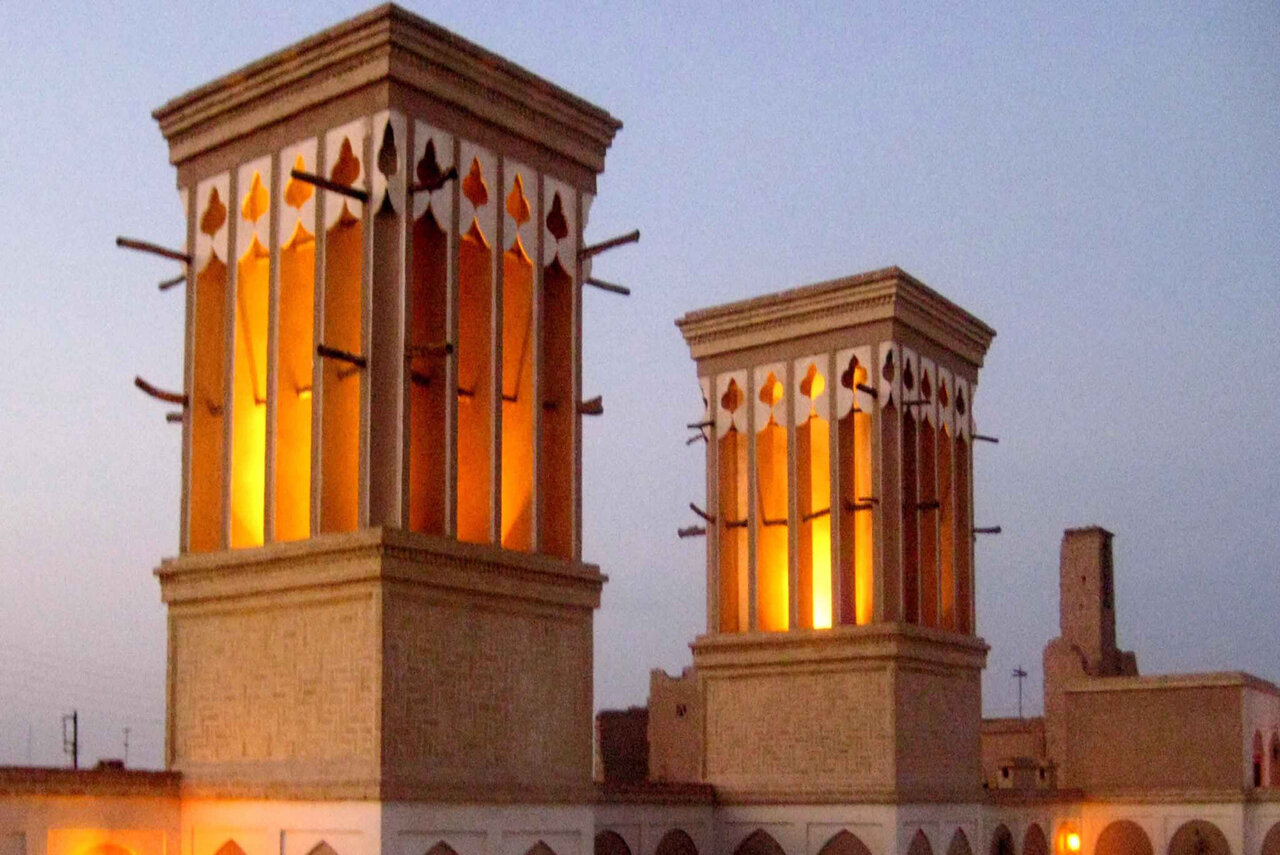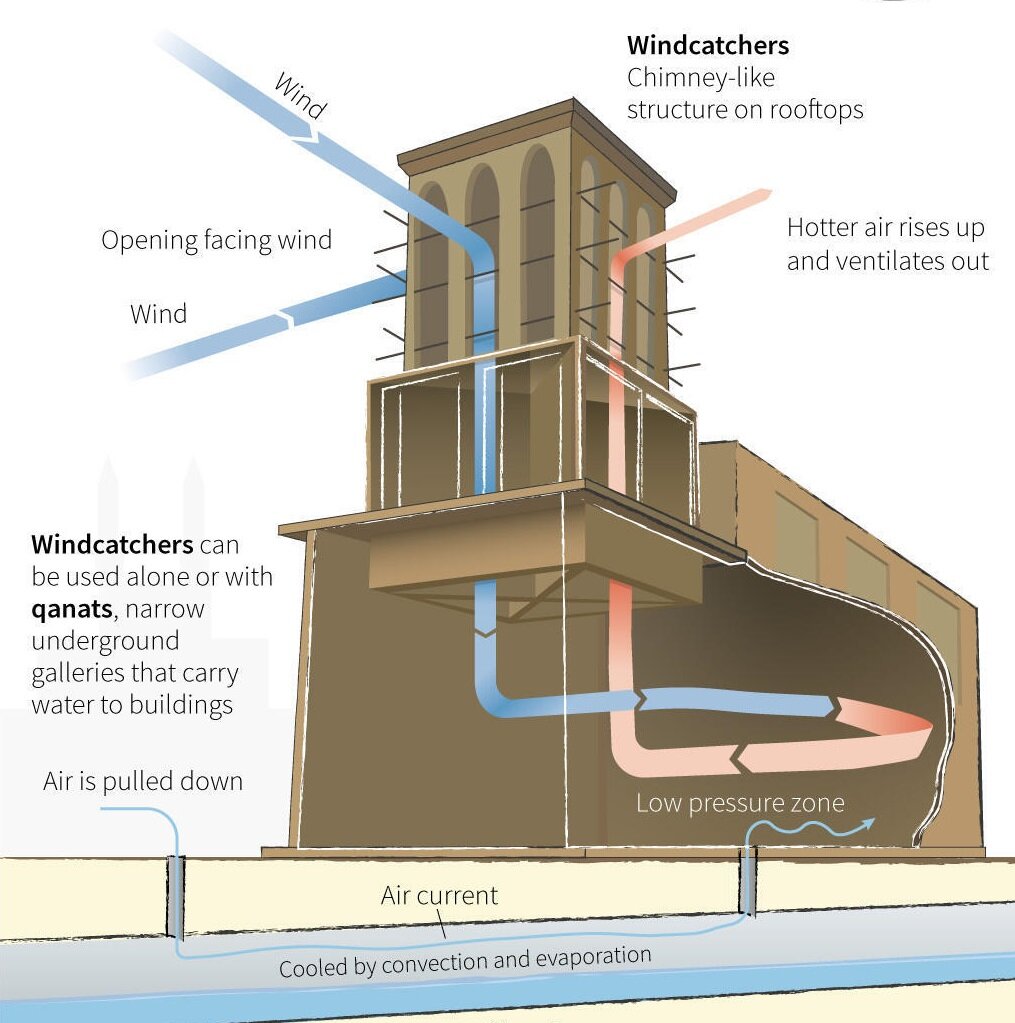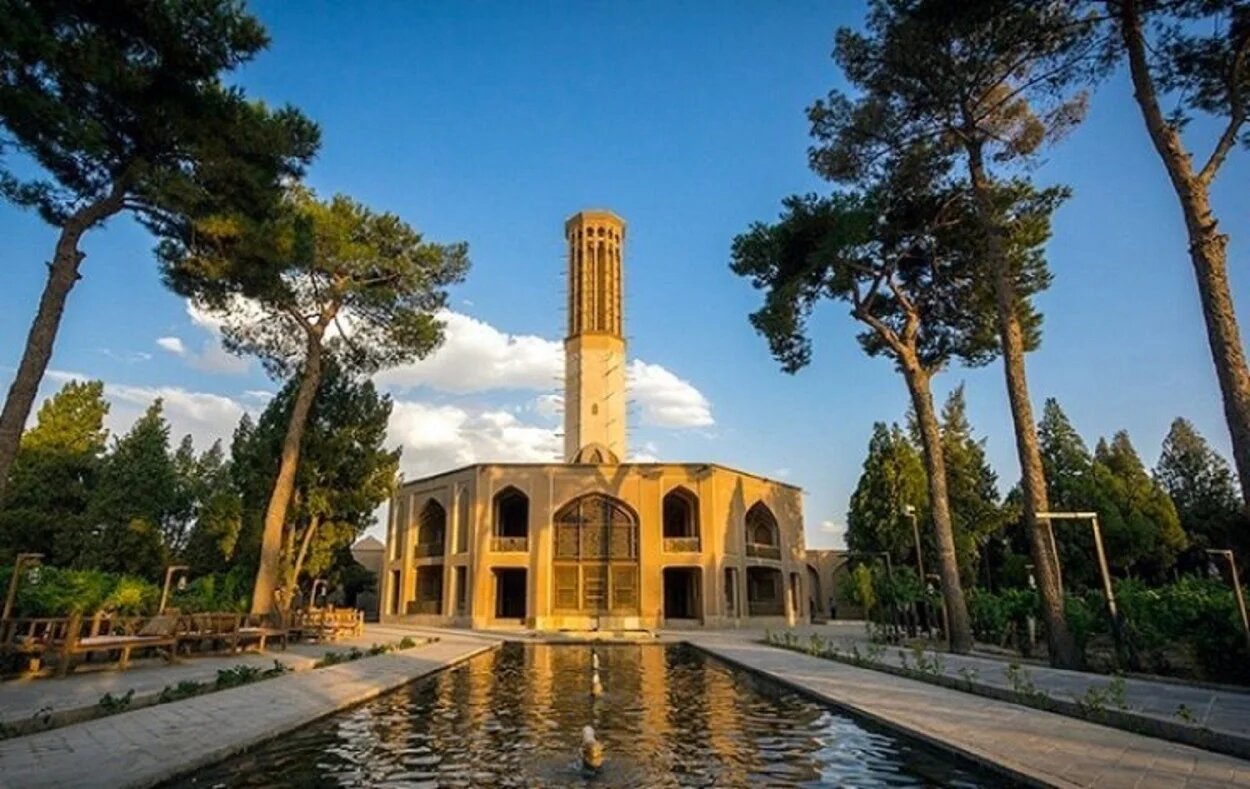Windcatchers in Iran: a cooling marvel of ancient ingenuity

Imagine living in an oasis house during the scorching summer heat. It might sound unbearable, but thanks to the ingenuity of ancient engineers, towering windcatchers transformed these homes into havens of comfort!
Iran’s rich architectural heritage shines through its ingenious creations that harmonize with nature, and among these, the windcatchers (or badgirs) stand out as a testament to ancient engineering wisdom.
These relatively tall, decorative structures have been a sustainable solution to cooling and ventilation in arid climates, predating modern air conditioning for centuries and even for millennials.
They are chimney-like towers with open sides designed to capture breezes high above ground level and direct them into the buildings below.
By channeling cool air downward and expelling warm air through opposite vents, they provide natural ventilation and reduce indoor temperatures by an impressive 8 to 12 °C. In some cases, the incoming air is directed over water, commonly the flowing subterranean aqueducts or qanats that pass under vast mansions or big houses, offering additional cooling.
Even on still days, when there is a complete absence of wind, uses passive solar energy to enhance natural ventilation through the convection of air heated by the sun. This way, warm air rises through it, drawing down cooler air into the building from the other side.

The origins of windcatchers trace back thousands of years, with early examples possibly appearing in Persian temples and even Ancient Egyptian art.
Iran’s central city of Yazd, recognized as a UNESCO World Heritage site, is home to some of the most iconic and well-preserved windcatchers. A top example is Yazd’s Dowlatabad garden, which is home to a towering 33-metre windcatcher, one of the tallest in the world.
This city, surrounded by desert, is often celebrated as the pinnacle of windcatcher architecture, showcasing both its functional brilliance and cultural significance.
A visit to Yazd, with its skyline dotted by these magnificent windcatchers, offers a glimpse into a world where tradition and sustainability converge,

The wind-catcher of Dowlatabad garden, the world’s tallest standing at 33.8 meters, in Iran’s central city of Yazd.
Design and functionality
Windcatchers typically consist of three main components: a shaft, which serves as a channel for air; a wind scoop, located at the top, which captures and directs the wind, and a diffuser, at the base, which evenly distributes the air throughout the building.
These elements work together to create a pressure differential, ensuring a steady flow of fresh, cool air into the heart of homes, bazaars, mosques, and even palaces.
Cultural and historical significance
Beyond their ventilation benefits, windcatchers symbolize Iran’s architectural identity and craftsmanship. Their towering presence atop adobe structures, particularly in Yazd, Kerman, and Kashan, reflects the cleverness of Persian builders who harmonized form, function, and sustainability.
Modern relevance and preservation
Still in some traditional mansions of ancient cities, despite advancements in modern cooling technologies, windcatchers remain an inspiration for sustainable architecture.
Some architects today draw from their principles, integrating natural ventilation systems into contemporary designs. Efforts to restore and preserve these timeless structures highlight their cultural value and historical importance, ensuring that future generations can marvel at their elegance and ingenuity.
AM
